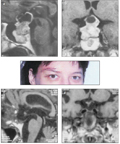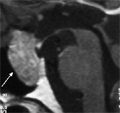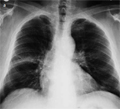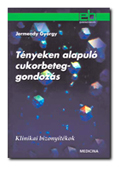The eLitMed.hu medical portal uses computer cookies for convenient operation. Detailed information can be found in the Cookie-policy.
Lege Artis Medicinae - 2006;16(08-09)
Content
[THE PRACTICE AND RESULTS OF OSTEOPOROSIS MANAGEMENT IN HUNGARY]
[Osteoporosis poses a major public health problem worldwide due to the extreme number of patients and to the deterioration of quality of life, disability, excess mortality and costs associated with consequent fractures. Representative studies of the author’s group have previously shown that the average bone mineral density values of the Hungarian population are among the lowest in Europe while the prevalence of vertebral fractures is among the highest in international comparison. This revelation has led to the development of a National Osteoporosis Programme, the key element of which being the setting up of a network of osteoporosis centres that are based on the collaboration of various medical specialists, the availability of advanced diagnostic tools and outstanding therapeutic opportunities. On describing the 10-year activity of the centres, the main diagnostic, prevention and management approaches of osteoporosis are discussed. According to the WHO classification the diagnosis of osteoporosis is based on a low bone mineral density finding supported by the laboratory and radiological exclusion of other metabolic bone diseases and secondary forms of osteoporosis. According to the up-to-date treatment guidelines of osteoporosis, when considering medical treatment, preference should be given to patients with high fracture risk in giving drugs with extensive antifracture efficacy that has been confirmed by studies of evidencebased medicine. Among these drugs the most important are the antiresorptive bisphosphonates that have widely been used in Hungary and the bone forming teriparatide that is expected to gain wider use in the near future with the introduction of public health insurance financing. The efficacy of these specific antiosteoporotics is increased by supplementation with calcium and vitamin D. The internationally acknowledged Hungarian osteoporosis management system offers to Hungarian patients outstanding standards for the prevention and management of osteoporosis.]
[STATE-OF-THE-ART DIAGNOSIS AND TREATMENT OF PITUITARY ADENOMAS SECRETING GROWTH HORMONE]
[The history of the treatment of pituitary adenomas that cause acromegaly is as long as that of neurosurgery. While in the first half of the past century the aim of surgery was to save the patient's life, later the radical removal of the tumour was coupled with an effort to decrease complications, morbidity and mortality to the minimum. Today, beside all these, the complete sparing of the remaining hypophyseal substance and restoration of normal pituitary function are also important goals. The achievement of these goals is efficiently served by recent advances in microscopy, the minimally invasive methods of craniotomy, the availability of endoscopy in neurosurgery, three-dimensional computerguided neuronavigation, intraoperative colour Doppler sonography, as well as intraoperative real-time MRI. Recent developments in pharmacological research have created new promising conservative treatment modalities that supplement surgery, including somatostatin analogues and growth hormone receptor agonists. Also as supplementary treatment to surgery, occasionally replacing it, new radiosurgical methods, such as stereotaxic radiation, gamma knife, and heavy particle irradiation have gained grounds in neurosurgical practice.]
[DIAGNOSIS, DIFFERENTIAL DIAGNOSIS AND TREATMENT OF HYPERPROLACTINAEMIA]
[Hyperprolactinaemia is one of the most common endocrine diseases. Besides hypothyroidism- associated hyperprolactinaemia and that arising as a side effect of certain drugs, the most common cause of hyperprolactinaemia is a pituitary microadenoma (<10 mm in diameter) or macroadenoma (≥10 mm) that produces prolactin (prolactinoma). In addition, several physiological conditions can elevate (mostly temporarily) the serum prolactin level, therefore, setting up the precise diagnosis requires careful evaluation of the patient’s history and the laboratory, clinical, and imaging findings. Moreover, macroprolactinaemia, which is usually not a pituitary tumour-related disease, should also be ruled out. Prolactinomas represent the most common form of functioning pituitary adenomas, accounting for 30-40% of such tumours. The typical clinical symptoms of hyperprolactinaemia may be modulated by the mass effect of macroadenomas. In women the disease typically manifests as menstrual disturbance of various degree, including primary or secondary amenorrhoea, oligomenorrhoea, short luteal phase, infertility and galactorrhoea. In men reduced libido, impotence, infertility, gynaecomastia and, rarely, galactorrhoea are the typical symptoms. Dopamine agonist therapy is the first choice of treatment. Dopamine agonist therapy (bromocriptine and the recently developed quinagolide and cabergoline) successfully lowers the serum prolactine level in nearly 90% of cases, and, importantly, it also reduces the size of the tumour in the majority of cases. This explains why today surgery and radiotherapy are only used in rare special cases of prolactinoma.]
[MENOPAUSE AND CARDIOVASCULAR RISK]
[The physiological changes of menopause are associated with an increase in cardiovascular risk. Cardiovascular diseases lead mortality statistics also in women. Several physiological effects of oestrogen are thought to be protective for the circulatory system. The reasonable idea of hormone replacement therapy, however, has not met the expectations. This article reviews the relevant studies and discusses the possible causes of failure. The second part focuses on the issue of prevention. The Evidence-Based Guidelines for Cardiovascular Disease Prevention in Women, a recommendation developed in the US, is delineated. Hungarian data are provided based on results of the Menokard programme. The paper gives an overview of hormone replacement therapy and cardiovascular prevention in postmenopausal women.]
[THE ROLE OF INTRA-ABDOMINAL OBESITY IN THE DEVELOPMENT OF CARDIOVASCULAR DISEASE]
[Obesity, particularly intra-abdominal (visceral) obesity, is a leading cause of cardiovascular disease, insulin resistance, type 2 diabetes, dyslipidaemia, and thrombosis. There is a growing consensus that abdominal obesity, measured by wait circumference, is a better predictor of coronary artery disease, diabetes and metabolic syndrome than body mass index. Although the primary function of adipocytes is storage and release of energy, several factors secreted by adipocytes have regulatory roles in metabolism and exert vascular effects. The pro-inflammatory adipokines, for example, play a causal role in the development of insulin resistance, type 2 diabetes and cardiovascular disease. Clinical studies provide growing evidence that adipous tissue is biologically highly active and possesses a range of metabolic and endocrine functions. The aim of this review is to explore the pathophysiological connections between abdominal obesity and the development of cardiovascular diseases.]
[BREAST CANCER CARE: FROM PREVENTION TO SURVEILLANCE]
[Breast cancer is the most common malignancy in women in developed countries. The development of most breast cancers is related to various hormonal effects, while 10% is associated with inherited gene mutations. Most of the primary prevention methods aim at decreasing the effects of hormones, but education on proper lifestyle is also an important risk-lowering method. The primary treatment of early breast cancer is usually breast-conserving surgery, either with the targeted removal of regional lymph nodes (by sentinel lymph node labelling) or with axillary block-dissection. The aim of postoperative radiotherapy is the eradication of the tumour cells left behind. Beside the locoregional tumour control this also plays a role in the prevention of recurrence or a secondary systemic dissemination. Adjuvant systemic treatments are used for the eradication of disseminated microscopic tumour foci. The use of modern adjuvant treatments may reduce death from the disease by up to 50%. The risks of relapse or death may be estimated based on established prognostic factors. While in low-risk patients it is not worth starting medical treatment, especially in view of the side effects, while in other cases chemo- or hormonal therapy may save the patient's life. The choice of the medical treatment should also depend on the patient's general health, the concomittant diseases and her preferences. The collaboration of the various specialists involved in the care of breast cancer patients can best take place at specialised breast centres that are equipped with the necessary technical basis, knowledge and professional experience.]
[RHEUMATIC DISEASES AND MALIGNANCIES - PARANEOPLASTIC SYNDROMES]
[Numerous malignancies may be associated with musculoskeletal symptoms. In paraneoplastic syndromes, the rheumatic disease is related to the tumour development and the removal or treatment of the underlying malignancy results in the improvement of rheumatic symptoms. Sometimes it is the bad responsiveness of the rheumatic disease to conventional therapies that calls the attention to an underlying malignant condition. Therefore, in case of an unusual disease course a thorough search for malignancies is indicated. The authors give a thematic review on the most common paraneoplastic rheumatic syndromes and discuss the general diagnostic and therapeutic guidelines.]
[BRONCHUS ASSOCIATED LYMPHOID TISSUE LYMPHOMA]
[INTRODUCTION - Primary lymphomas rarely occur in the lung. CASE REPORT - The authors present the case of an asymptomatic 61-year-old man. The patient was identified on routine chest X-ray having a streak infiltrate in the upper lobe of the right lung, which did not respond to antibiotics. On histological examination of the bronchoscopic specimen BALT- (bronchus associated lymphoid tissue) lymphoma was presumed. Since staging showed the disease to be localized, lobectomy was performed. The patient is symptom-free 16 months after surgery and there is no relapse. CONCLUSION - Although BALT-lymphomas are of low-grade malignancy in most of the cases, relapses can develop in the original organ or in other extra-nodal locations years later and BALTlymphomas may also transform into large-cell lymphomas of more aggressive behaviour.]
[TAKAYASU’S ARTERITIS DETECTED IN AN EARLY PHASE]
[INTRODUCTION - Takayasu’s arteritis is an idiopathic inflammatory disease of the great elastic arteries, mainly of the aorta and its primary branches. It primarily affects young women. CASE REPORT - A 20-year-old woman presented with general inflammatory symptoms that had begun 3 to 4 months before. Earlier she underwent a biopsy from a mass on the neck thought to be a lymph node, which on histopathological examination turned out to be a non-necrosing granulomatosis in the wall of a large artery. Based on this finding as well as on the presence of fever, weight loss, carotid murmur, anaemia, elevated platelet count, increased sedimentation rate, the lack of pulse and the findings of imaging examinations, Takayasu’s arteritis was diagnosed. Treatment was started with high-dose steroid monotherapy, which resulted in clinical and laboratory remission after a short time. The imaging findings (neck soft tissue sonogram and MRI) also showed improvement, however, a moderate but definite disease activity was still present, thus steroid treatment was supplemented with azathioprin. CONCLUSION - It is important to follow the disease both clinically and with imaging techniques for an early recognition of the need for changing or adjusting the treatment.]
1.
Clinical Neuroscience
[Headache registry in Szeged: Experiences regarding to migraine patients]2.
Clinical Neuroscience
[The new target population of stroke awareness campaign: Kindergarten students ]3.
Clinical Neuroscience
Is there any difference in mortality rates of atrial fibrillation detected before or after ischemic stroke?4.
Clinical Neuroscience
Factors influencing the level of stigma in Parkinson’s disease in western Turkey5.
Clinical Neuroscience
[The effects of demographic and clinical factors on the severity of poststroke aphasia]1.
2.
Clinical Oncology
[Pancreatic cancer: ESMO Clinical Practice Guideline for diagnosis, treatment and follow-up]3.
Clinical Oncology
[Pharmacovigilance landscape – Lessons from the past and opportunities for future]4.
5.




























